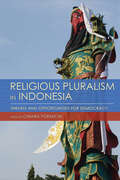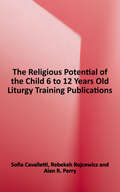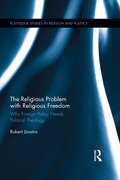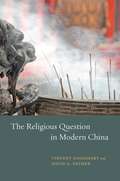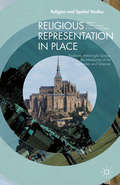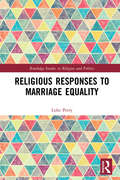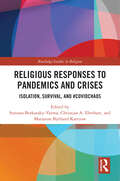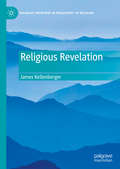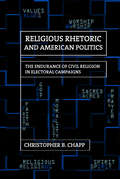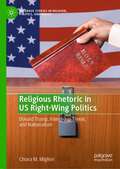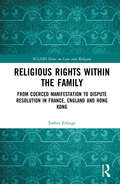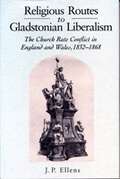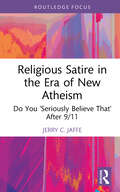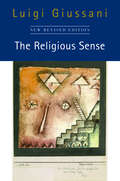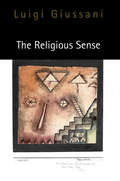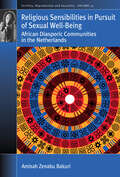- Table View
- List View
Religious Pluralism in Indonesia: Threats and Opportunities for Democracy (Cornell Modern Indonesia Project)
In 1945, Sukarno declared that the new Indonesian republic would be grounded on monotheism, while also insisting that the new nation would protect diverse religious practice. The essays in Religious Pluralism in Indonesia explore how the state, civil society groups, and individual Indonesians have experienced the attempted integration of minority and majority religious practices and faiths across the archipelagic state over the more than half century since Pancasila. The chapters in Religious Pluralism in Indonesia offer analyses of contemporary phenomena and events; the changing legal and social status of certain minority groups; inter-faith relations; and the role of Islam in Indonesia's foreign policy. Amidst infringements of human rights, officially recognized minorities—Protestants, Catholics, Hindus, Buddhists and Confucians—have had occasional success advocating for their rights through the Pancasila framework. Others, from Ahmadi and Shi'i groups to atheists and followers of new religious groups, have been left without safeguards, demonstrating the weakness of Indonesia's institutionalized "pluralism."Contributors: Lorraine Aragon, Christopher Duncan, Kikue Hamayotsu, Robert Hefner, James Hoesterey, Sidney Jones, Mona Lohanda, Michele Picard, Evi Sutrisno, Silvia Vignato
Religious Potential of the Child 6 to 12 Years Old: A Description of an Experience
by Sofia CavallettiHere at last is the long-awaited continuation of The Religious Potential of the Child (from 3 to 6 years old). The author, Sofia Cavaletti, founder of the Catechesis of the Good Shepherd, describes an approach to the religious education of children according to the methods of Maria Montessori, which has gained worldwide attention. In this book she draws on her long experience with children from diverse cultures and environments to describe the vital religious needs of the older child (6 to 12 years old). The Catechesis of the Good Shepherd for the older child builds on the foundation in scripture and liturgy offered to the younger child (3 to 6 years old). The theme of the covenant between God and humankind first revealed to the people of Israel, is expanded to include the dimension of time: all of history, from creation to the parousia. For the older child, awareness of participation in this covenant relationship leads spontaneously to a sense of moral responsibility, and of engagement with the cosmos in all its manifestations. This book will be a great help to educators and catechists who seek to understand the characteristics of the older child, particularly the child’s relationship with the mystery of God.
Religious Practice and Democracy in India
by Pradeep K. Chhibber Sandeep ShastriThis book demonstrates the close relationship between religion and democracy in India. Religious practice creates ties among citizens that can generate positive and democratic political outcomes. In pursuing this line of inquiry the book questions a dominant strand in some contemporary social sciences - that a religious denomination (Catholic, Hindu, Muslim, Sikh, and so on) is sufficient to explain the relationship between religion and politics or that religion and democracy are antithetical to each other. The book makes a strong case for studying religious practice and placing that practice in the panoply of other social practices and showing that religious practice is positively associated with democracy.
The Religious Problem with Religious Freedom: Why Foreign Policy Needs Political Theology (Routledge Studies in Religion and Politics)
by Robert J. JoustraRival understandings of the meaning and practice of the religious and the secular lead to rival public perspectives about religion and religious freedom in North America. This book explores how debates over the American Office of Religious Freedom and its International Religious Freedom Act (IRFA, 1998) and very recent debates over the Canadian Office of Religious Freedom (2013) have pitted at least six basic, but very different meanings of the religious and the secular against each other in often undisclosed and usually unproductive ways. Properly naming this ‘religious problem’ is a critical first step to acknowledging and conciliating their practically polar political prescriptions. It must be considered how we are to think about religion in political offices, both the Canadian and the American experience, as an essentially contested term, and one which demands better than postmodern paralysis, what the author terms political theology. This is especially critical since both of these cases are not just about how to deal with religion at home, but how to engage with religion abroad, where real peril, and real practical policy must be undertaken to protect increasingly besieged religious minorities. Finally, a principled pluralist approach to the religious and the secular suggests a way to think outside the ‘religious problem’ and productively enlist and engage the forces of religion resurging around the globe. The book will be of great use to scholars and students in religion and foreign affairs, secularization, political theology, and political theory, as well as professionals and policy makers working in issues relating to religion, religious freedom, and foreign affairs.
The Religious Question in Modern China
by Vincent Goossaert David A. PalmerRecent events—from strife in Tibet and the rapid growth of Christianity in China to the spectacular expansion of Chinese Buddhist organizations around the globe—vividly demonstrate that one cannot understand the modern Chinese world without attending closely to the question of religion. The Religious Question in Modern China highlights parallels and contrasts between historical events, political regimes, and cultural movements to explore how religion has challenged and responded to secular Chinese modernity, from 1898 to the present. Vincent Goossaert and David A. Palmer piece together the puzzle of religion in China not by looking separately at different religions in different contexts, but by writing a unified story of how religion has shaped, and in turn been shaped by, modern Chinese society. From Chinese medicine and the martial arts to communal temple cults and revivalist redemptive societies, the authors demonstrate that from the nineteenth century onward, as the Chinese state shifted, the religious landscape consistently resurfaced in a bewildering variety of old and new forms. The Religious Question in Modern China integrates historical, anthropological, and sociological perspectives in a comprehensive overview of China’s religious history that is certain to become an indispensible reference for specialists and students alike.
The Religious Question in Modern China
by Vincent Goossaert David A. PalmerRecent events—from strife in Tibet and the rapid growth of Christianity in China to the spectacular expansion of Chinese Buddhist organizations around the globe—vividly demonstrate that one cannot understand the modern Chinese world without attending closely to the question of religion. The Religious Question in Modern China highlights parallels and contrasts between historical events, political regimes, and cultural movements to explore how religion has challenged and responded to secular Chinese modernity, from 1898 to the present. Vincent Goossaert and David A. Palmer piece together the puzzle of religion in China not by looking separately at different religions in different contexts, but by writing a unified story of how religion has shaped, and in turn been shaped by, modern Chinese society. From Chinese medicine and the martial arts to communal temple cults and revivalist redemptive societies, the authors demonstrate that from the nineteenth century onward, as the Chinese state shifted, the religious landscape consistently resurfaced in a bewildering variety of old and new forms. The Religious Question in Modern China integrates historical, anthropological, and sociological perspectives in a comprehensive overview of China’s religious history that is certain to become an indispensible reference for specialists and students alike.
Religious Radicalization and Securitization in Canada and Beyond
by Paul Bramadat Lorne DawsonAfter the terrorist attacks of 9/11, those in London and Madrid, and the arrest of the "Toronto 18," Canadians have changed how they think about terrorism and security. As governments respond to the potential threat of homegrown radicalism, many observers have become concerned about the impact of those security measures on the minority groups whose lives are "securitized."In Religious Radicalization and Securitization in Canada and Beyond, Paul Bramadat and Lorne Dawson bring together contributors from a wide range of academic disciplines to examine the challenges created by both religious radicalism and the state's and society's response to it. This collection takes a critical look at what is known about religious radicalization, how minorities are affected by radicalization from within and securitization from without, and how the public, media, and government are attempting to cope with the dangers of both radicalization and securitization.Religious Radicalization and Securitization in Canada and Beyond is an ideal guide to the ongoing debates on how best to respond to radicalization without sacrificing the commitments to multiculturalism and social justice that many Canadians hold dear.
Religious Refugees in the Early Modern World
by Nicholas TerpstraThe religious refugee first emerged as a mass phenomenon in the late fifteenth century. Over the following two and a half centuries, millions of Jews, Muslims, and Christians were forced from their homes and into temporary or permanent exile. Their migrations across Europe and around the globe shaped the early modern world and profoundly affected literature, art, and culture. Economic and political factors drove many expulsions, but religion was the factor most commonly used to justify them. This was also the period of religious revival known as the Reformation. This book explores how reformers' ambitions to purify individuals and society fueled movements to purge ideas, objects, and people considered religiously alien or spiritually contagious. It aims to explain religious ideas and movements of the Reformation in nontechnical and comparative language.
Religious Representation in Place: Exploring Meaningful Spaces at the Intersection of the Humanities and Sciences (Religion And Spatial Studies)
by Mark K. George Daria Pezzoli-OlgiatiReligious Representation in Place.
Religious Representation in Place: Exploring Meaningful Spaces at the Intersection of the Humanities and Sciences (Religion and Spatial Studies)
by Mark K. George Daria Pezzoli-OlgiatiReligious Representation in Place brings together an interdisciplinary group of scholars from the Humanities and Sciences to broaden the understanding of how religious symbols and spatial studies interact. The essays consider the relevance of religion in the experience of space, a fundamental dimension of culture and human life.
Religious Responses to Marriage Equality (Routledge Studies in Religion and Politics)
by Luke E PerryThe Supreme Court ruling in Obergefell v. Hodges (2015) ended a 20-year political battle over same-sex marriage in the USA. The ruling in favor of a constitutional right for gays and lesbians to marry reflected growing social acceptance and political rights for gays and lesbians. At the same time, America remains a deeply religious country and many religious organizations have long opposed same-sex marriage. How do religious organizations interpret, process, and respond to shifting attitudes and public policy toward the LGBT community? Examining how religious groups in America have responded theologically and politically to the legalization of same-sex marriage, the book provides case studies from across the American religious spectrum to explore how each group understands same-sex marriage and has reacted theologically, socially, and politically to its new standing as a constitutional right. Each case study focuses on formal statements made by church leaders, incorporates original data gathered from interviews with regional and local religious authorities, and analyzes existing polling data of adherents at large. Offering a comprehensive examination of religious responses to marriage equality in the USA, this book will interest scholars and students in the fields of religion and politics, civil rights, social change, and public policy.
Religious Responses to Pandemics and Crises: Isolation, Survival, and #Covidchaos (Routledge Studies in Religion)
by Sravana Borkataky-Varma Christian A. Eberhart Marianne Bjelland KartzowReligious Responses to Pandemics and Crises explores various dimensions of the interrelations between the individual, community, and religion. With their global scope, the contributions to this volume represent reflections on the rich and multifaceted spectrum of human responses in a variety of different religions and cultures to the current SARS-2-COVID-19 pandemic and similar crises in the past.The contributions are organized in three thematic parts focusing on strategies, rituals, and past and present responses to pandemics and crises. They reflect on the intersection of personal or communal responses and state-mandated policies relative to SARS-2-COVID-19 while outlining different strategies to cope with the pandemic crisis. Timely questions explored include: How do individuals connect with or disconnect from religious and spiritual communities during times of personal and collective crises, including pandemics? How do religious practices such as rituals bridge individuals and communities? How do religious texts from past and present highlight and represent crises and pandemics? Dynamic and multidisciplinary in its inquiry, this volume is an outstanding resource for scholars of religion, theology, anthropology, social sciences, ritual theory, sex and gender studies, and contemporary medical science.
Religious Responses to Pandemics and Crises: Isolation, Survival, and #Covidchaos (Routledge Studies in Religion)
by Sravana Borkataky-Varma, Christian A. Eberhart, and Marianne Bjelland KartzowReligious Responses to Pandemics and Crises explores various dimensions of the interrelations between the individual, community, and religion. With their global scope, the contributions to this volume represent reflections on the rich and multifaceted spectrum of human responses in a variety of different religions and cultures to the current SARS2-COVID-19 pandemic and similar crises in the past. The contributions are organized in three thematic parts focusing on strategies, rituals, and past and present responses to pandemics and crises. They reflect on the intersection of personal or communal responses and state-mandated policies relative to SARS2-COVID-19 while outlining different strategies to cope with the pandemic crisis. Timely questions explored include: How do individuals connect with or disconnect from religious and spiritual communities during times of personal and collective crises, including pandemics? How do religious practices such as rituals bridge individuals and communities? How do religious texts from past and present highlight and represent crises and pandemics? Dynamic and multidisciplinary in its inquiry, this volume is an outstanding resource for scholars of religion, theology, anthropology, social sciences, ritual theory, sex and gender studies, and contemporary medical science.
Religious Revelation (Palgrave Frontiers in Philosophy of Religion)
by James KellenbergerThis book addresses several dimensions of religious revelation. These include its occurrence in various religious traditions, its different forms, its elaborations, how it has been understood by Western theologians, and differing views of revelation’s ontological status. It has been remarked that revelation is most at home in theistic traditions, and this book gives each of the three Abrahamic traditions – Judaism, Christianity, and Islam – its own chapter. Revelation, however, is not limited to theistic traditions; forms found in Buddhism and nondevotional (nontheistic) Hinduism are also explored. In the book’s final chapter a particularly significant form of religious revelation is identified and examined: pervasive revelation. The theistic manifestation of this form of revelation, pervasive in the sense that it may occurs in all the domains or dimensions of human existence, is shown to be richly represented in the Psalms, where God’s presence may be found in the heavens, in the growing of grass, and in one’s daily going out and coming in. Pervasive revelation of religious reality is also shown to be present in the Buddhist tradition.
Religious Revitalization among the Kiowas: The Ghost Dance, Peyote, and Christianity
by Benjamin R. KrachtFramed by theories of syncretism and revitalization, Religious Revitalization among the Kiowas examines changes in Kiowa belief and ritual in the final decades of the nineteenth century. During the height of the horse-and-bison culture, Kiowa beliefs were founded in the notion of daudau, a force permeating the universe that was accessible through vision quests. Following the end of the Southern Plains wars in 1875, the Kiowas were confined within the boundaries of the Kiowa-Comanche-Apache (Plains Apache) Reservation. As wards of the government, they witnessed the extinction of the bison herds, which led to the collapse of the Sun Dance by 1890. Though prophet movements in the 1880s had failed to restore the bison, other religions emerged to fill the void left by the loss of the Sun Dance. Kiowas now sought daudau through the Ghost Dance, Christianity, and the Peyote religion. Religious Revitalization among the Kiowas examines the historical and sociocultural conditions that spawned the new religions that arrived in Kiowa country at the end of the nineteenth century, as well as Native and non-Native reactions to them. A thorough examination of these sources reveals how resilient and adaptable the Kiowas were in the face of cultural genocide between 1883 and 1933. Although the prophet movements and the Ghost Dance were short-lived, Christianity and the Native American Church have persevered into the twenty-first century. Benjamin R. Kracht shows how Kiowa traditions and spirituality were amalgamated into the new religions, creating a distinctive Kiowa identity.
Religious Revolutionaries
by Robert C. FullerIn this clever and entertaining look at the United States and religious freedom, Robert C. Fuller introduces us to religious revolutionaries who, in very unique ways, shaped American religious tradition and fought to establish new forms of spirituality. Chronological in scope, Religious Revolutionaries takes us from Puritanism and Calvinism in America's colonial period to present-day belief systems. We meet religious rebels who are widely recognized, such as Thomas Jefferson, the architect of our constitutional guarantee of religious freedom. We meet Andrew Jackson Davis, America's first trance channeler and forceful champion of the inner divinity of every person. We are introduced to Mary Daly, who openly confronted the sexist bias of most organized religion. We also learn about trailblazers such as Phineas P. Quimby, who challenged the Protestant theology of his day and whose ideas became the foundation for Christian Science philosophy, and James Cone, the bold spokesperson for black power and black spirituality. Religious Revolutionaries is a page-turner that focuses on the people who shaped religion in the United States, but it is also a captivating journey through the history of our diverse country.
Religious Rhetoric and American Politics: The Endurance of Civil Religion in Electoral Campaigns
by Christopher B. ChappFrom Reagan's regular invocation of America as "a city on a hill" to Obama's use of spiritual language in describing social policy, religious rhetoric is a regular part of how candidates communicate with voters. Although the Constitution explicitly forbids a religious test as a qualification to public office, many citizens base their decisions about candidates on their expressed religious beliefs and values. In Religious Rhetoric and American Politics, Christopher B. Chapp shows that Americans often make political choices because they identify with a "civil religion," not because they think of themselves as cultural warriors. Chapp examines the role of religious political rhetoric in American elections by analyzing both how political elites use religious language and how voters respond to different expressions of religion in the public sphere.Chapp analyzes the content and context of political speeches and draws on survey data, historical evidence, and controlled experiments to evaluate how citizens respond to religious stumping. Effective religious rhetoric, he finds, is characterized by two factors-emotive cues and invocations of collective identity-and these factors regularly shape the outcomes of American presidential elections and the dynamics of political representation. While we tend to think that certain issues (e.g., abortion) are invoked to appeal to specific religious constituencies who vote solely on such issues, Chapp shows that religious rhetoric is often more encompassing and less issue-specific. He concludes that voter identification with an American civic religion remains a driving force in American elections, despite its potentially divisive undercurrents.
Religious Rhetoric in US Right-Wing Politics: Donald Trump, Intergroup Threat, and Nationalism (Palgrave Studies in Religion, Politics, and Policy)
by Chiara M. MiglioriThis book seeks to understand white conservative Christians’ support for Donald Trump, using their own words. Drawing on the triangular relationship between the 45th president, and his voters, and religious organizations, this work investigates the creation of the tale of Trump as the protector and enhancer of Christian values. The first part of the book discusses in detail the white conservative Christian constituency in the United States, and the development of feelings of displacement and resentment fostered by intergroup threat and nationalism. The central part focuses on the actor known as the “Religious Right,” through the rhetoric of one of their most representative organizations in the twenty-first century. The final part focuses on the character of Donald Trump and his peculiar relationship with religious discourse. The book demonstrates that while such discourse is expected of Trump as a Republican candidate, his approach to it is characterized by detachment and sloganized exploitation of Christian symbols. Ultimately, the book highlights the cultural tools that are crucial in the reproduction of structures of inequality and the ways they have been used by conservative politicians and groups to accumulate power.
Religious Rights within the Family: From Coerced Manifestation to Dispute Resolution in France, England and Hong Kong (ICLARS Series on Law and Religion)
by Esther ErlingsIt is often asserted that ‘A family that prays together, stays together’. But what if a child no longer wishes to pray? This book analyses the law in relation to situations where parents force their children to manifest the parental religion. From thorough examination of international law it argues that, unlike what is generally believed, the human rights regime does not grant parents a right to impose manifestations of their religion on their children. Instead, the author proposes to regard coerced manifestations as a limitation on children’s right to freedom of manifestation, based on national laws that give parents rights at the domestic level under principles such as parental responsibility. The book focuses on two aspects of States’ positive obligations in this regard. First, the obligation to provide a regulatory framework that can protect children’s right to freedom of manifestation, and restricts limitations to those that are proportionate or 'necessary in a democratic society'. Second, to provide access to remedies, which it is argued should consist of access to a family-friendly infrastructure for dispute resolution available to parents and children in conflict over religious manifestation. Both depend heavily on the way States balance power between parents and children at the national level. The book includes three case studies and social research of jurisdictions that offer different perspectives under the principles of parental authority (France), parental responsibility (England) and parental rights (Hong Kong).
Religious Routes to Gladstonian Liberalism: The Church Rate Conflict in England and Wales 1852–1868 (G - Reference, Information and Interdisciplinary Subjects)
by Jacob EllensThis book, covering the period 1832 to 1868, describes how the so-called "church rates" controversy contributed to the rise of a secular liberal state in England and Wales. The church rate was an ancient tax required of all ratepayers, regardless of denomination, for the upkeep of parish churches of the Church of England. This meant that Dissenters and other non-Anglicans paid for the support of the established Church. In the 1830s, however, the Dissenters determined to tolerate the situation no longer. The resulting thirty-six-year struggle became the central church-state issue of the Victorian period. Ellens further argues that church rates played a pivotal role in the shaping of Victorian liberalism. Dissenters desired a society in which church and state would be separate and religious affairs voluntary. When Gladstone decided to champion the Dissenters' "voluntaryist" cause in the 1860s, he established the relationship that would give him the solid basis of electoral strength he needed to carry out the great liberal reforms of his governments after 1868. Elegantly written and argued, this book carefully details the process of disestablishment in England and Wales and uncovers an important and little-recognized dimension to the formation of the Liberal party.
Religious Satire in the Era of New Atheism: Do You ‘Seriously Believe That’ After 9/11 (The Cultural Politics of Media and Popular Culture)
by Jerry C. JaffeReligious Satire in the Era of New Atheism presents a contemporary account of religious satire as evidenced by the modern art of stand-up comedy.Focused on the context of the post-9/11 American culture phenomenon, sometimes referred to as the New Atheism – as embodied by public intellectuals such as Christopher Hitchens, Sam Harris, and Richard Dawkins – it documents the rise of comedic satire in relation to evangelical beliefs and religious dogma. Drawing on the author’s own experience of stand-up performance, it examines the comedy of figures such as Mark Maron, Bill Maher, and Ricky Gervais and presents material from interviews with comedians including Lewis Black, John Fugelsang, and Leigh Ann Lord to provide unique insights into some of the issues and definitions surrounding satire.With attention to the demonstrable rise in religious satire following the events of September 11, 2001, the author considers the clear link between this increase and the New Atheist movement, exploring shared themes and presence at specific events, such that stand-up comedy represents the Avant Garde of the New Atheists.
The Religious Sense: New Revised Edition
by Luigi GiussaniThe Religious Sense, the fruit of many years of dialogue with students, is an exploration of the search for meaning in life. Luigi Giussani shows that the nature of reason expresses itself in the ultimate need for truth, goodness, and beauty. These needs constitute the fabric of the religious sense, which is evident in every human being everywhere and in all times. So strong is this sense that it leads one to desire that the answer to life’s mystery might reveal itself in some way.Giussani challenges us to penetrate the deepest levels of experience to discover our essential selves, breaking through the layers of opinions and judgments that have obscured our true needs. Asserting that all the tools necessary for self-discovery are inherent within us, he focuses primarily on reason, not as narrowly defined by modern philosophers, but as an openness to existence, a capacity to comprehend and affirm reality in all of its dimensions.Part of the so-called new religious revival, The Religious Sense avoids any sentimental or irrational reduction of the religious experience. It is a forthright and refreshing call to reassess our lives. In this revised edition, John Zucchi offers a new translation of this seminal and best-selling work.
Religious Sense
by Luigi Giussani John E. ZucchiGiussani challenges us to penetrate the deepest levels of experience to discover our essential selves, breaking through the layers of opinions and judgments that have obscured our true needs. Asserting that all the tools necessary for self-discovery are inherent within us, he focuses primarily on reason, not as narrowly defined by modern philosophers, but as an openness to existence, a capacity to comprehend and affirm reality in all of its dimensions. Part of the so-called new religious revival, The Religious Sense avoids any sentimental or irrational reduction of the religious experience. It is a forthright and refreshing call to reassess our lives.
Religious Sense
by John E. Zucchi Luigi GiussaniGiussani challenges us to penetrate the deepest levels of experience to discover our essential selves, breaking through the layers of opinions and judgments that have obscured our true needs. Asserting that all the tools necessary for self-discovery are inherent within us, he focuses primarily on reason, not as narrowly defined by modern philosophers, but as an openness to existence, a capacity to comprehend and affirm reality in all of its dimensions. Part of the so-called new religious revival, The Religious Sense avoids any sentimental or irrational reduction of the religious experience. It is a forthright and refreshing call to reassess our lives.
Religious Sensibilities in Pursuit of Sexual Well-Being: African Diasporic Communities in the Netherlands (Fertility, Reproduction and Sexuality: Social and Cultural Perspectives #55)
by Amisah Zenabu BakuriThe self-identifying Ghanaian-Dutch and Somali-Dutch communities residing in the Randstad area of the Netherlands are deeply impacted by religious beliefs and cultural factors in their approach towards sexual health practices, well-being and pleasure. This book shows how religious sensibilities shape the physical activities, beauty practices, and gendered roles that are adopted into the daily lives of these communities in pursuit of their sexual and general well-being. Through an ethnographic account, it explores and challenges the assumptions held around the complex relationship between religion and sexuality.
